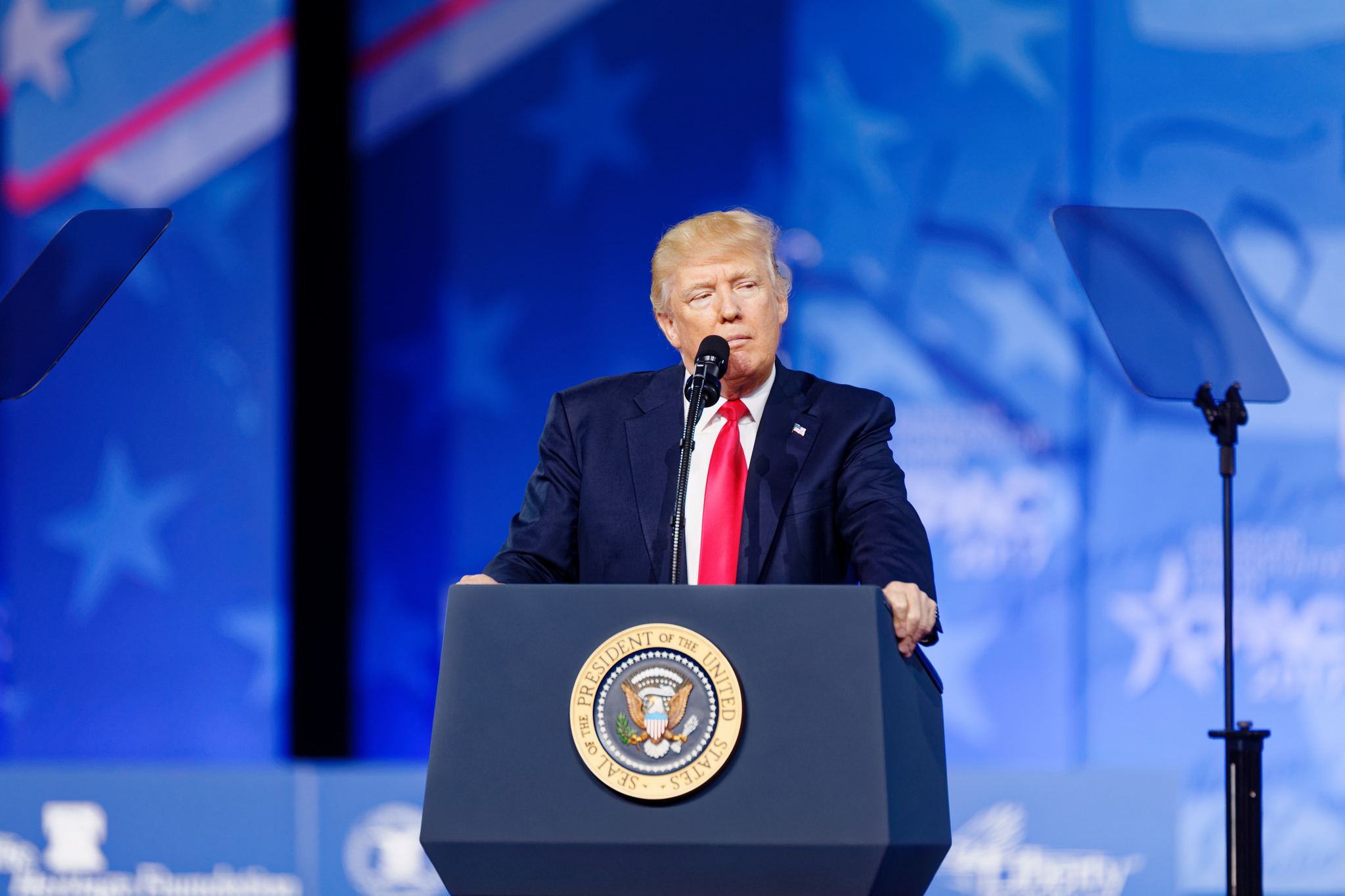
WASHINGTON — Resigned to losing his party’s grip on the House, President Donald Trump congratulated the House Democratic leader on Tuesday night and chose to celebrate “tremendous success” for Republicans in maintaining the Senate.
Trump called Rep. Nancy Pelosi and noted her pitch for bipartisanship in her remarks, her office tweeted. The president, in an earlier tweet, weighed in on the midterm results, overlooking the Democratic pickups in the House and writing: “Tremendous success tonight. Thank you to all!”
With results still coming in, Democrats were on track to gain control of the House, while Republicans kept their Senate majority. Widely viewed as a referendum on Trump’s presidency, the results offered a split decision that revealed deep divides in the American electorate.
Control of the House would give Democrats the ability to launch investigations into the president and stymie his agenda. But White House spokeswoman Sarah Huckabee Sanders minimized the magnitude of likely Democratic gains.
“Maybe you get a ripple, but I certainly don’t think that there’s a blue wave,” she told reporters, pointing to several early Republican wins.
As for Republicans retaining control of the Senate, she called it “a huge moment and victory for the president.”
White House aides called on Democrats to work with Republicans in the next Congress.
Said White House counsellor Kellyanne Conway: “I don’t know that there will be much of an appetite for Democrat lawmakers to spend all of their time, or most of their time or even a fraction of their time investigating, instigating, trying to impeach and subpoena people.”
In addition to the call to Pelosi, Trump called Republican Senate Majority Leader Mitch McConnell, Republican House Speaker Paul Ryan and Senate Democratic leader Chuck Schumer, as well as a number of candidates he backed during the race, the White House said. Sanders said he would continue making calls Wednesday.
Trump had aggressively campaigned in the closing days of the race, his focus on boosting Republicans in states that he carried in 2016. Of the three races he targeted in the final day, the Republicans won all of them: Mike Braun defeated Democratic Sen. Joe Donnelly in Indiana, Josh Hawley defeated Democratic Sen. Claire McCaskill in Missouri and Attorney General Mike DeWine defeated Democrat Richard Cordray in the race for Ohio governor.
The White House has been stressing the historical headwinds it faced: In the last three decades, 2002 was the only midterm election when the party holding the White House gained Senate seats. And only twice in the past eight decades has the president’s party picked up House seats in the midterms.
Trump spent election night watching returns with family and friends at the White House, his shadow looming large over the results.
Nearly 40 per cent of voters cast their ballots to express opposition to the president, according to AP VoteCast, a national survey of the electorate, while about 25 per cent said they voted to express support for Trump.
Opposition to Trump proved to be more a motivating factor for Democrats than support for the president a factor for Republicans. Still, Republican voters tended to be overwhelmingly supportive of the president.
Faced with the possibility of keeping the Senate but losing the House, aides in recent days had laid out the political reality to Trump, who could face an onslaught of Democratic-run investigations. In turn, Trump began trying out defensive arguments ahead of Election Day, noting that midterm losses are typical for the party in the White House, pointing out a high number of GOP retirements and stressing that he had kept his focus on the Senate.
Aides set up televisions in the White House residence for Trump, first lady Melania Trump and their guests to watch election results come in, with the sets tuned to different cable news channels. Among those expected were Trump’s adult children, White House aides, Republican officials and presidential friends.
The election served as a referendum of sorts on Trump’s racially charged appeals and the strength of the coalition that powered him to the White House — a group he will need again in just two years.
Overall, more voters disapproved of Trump’s job performance than approved — a finding that is largely consistent with recent polling. Voters scored Trump positively on the economy and for standing up “for what he believes in.” But the president received negative marks from voters on temperament and trustworthiness.
Still, about one-third of voters said Trump was not a factor in their votes.
Trump’s scorched-earth campaigning came to define the 2018 campaign. In the final days, he sought to motivate supporters with the battle over the confirmation of Supreme Court Justice Brett Kavanaugh. Ahead of the election, both parties claimed that the emotionally charged debate over Kavanaugh’s confirmation would motivate their supporters to turn out.
Returning to his immigration-heavy 2016 playbook, Trump went on to unleash his full fury on a caravan of migrants slowly making their way to the southern border. His take-no-prisoners approach troubled many Republicans seeking to appeal to moderate voters in suburban House districts, but Trump prioritized base voters in the deep-red states that could determine the fate of the Senate. At times he even appeared at odds with his own campaign, which in the election’s final days released a gauzy ad aimed at suburban women.
Trump did not care for the soft-focus ad, which notably did not mention him, according to a person familiar with the president’s thinking who was not authorized to speak publicly. Instead he promoted an expletive-loaded video featuring a Latino man convicted of murdering two police officers, which was widely decried as being racist.
———
Associated Press writer Deb Riechmann contributed to this report.